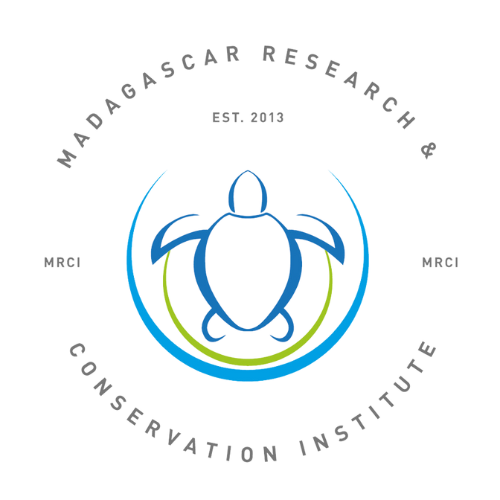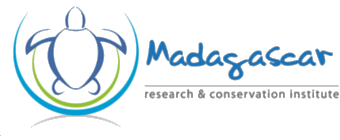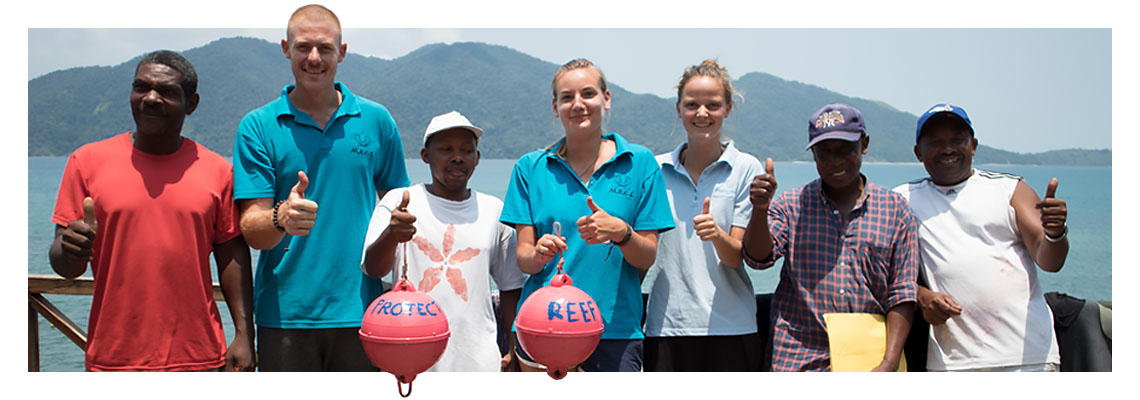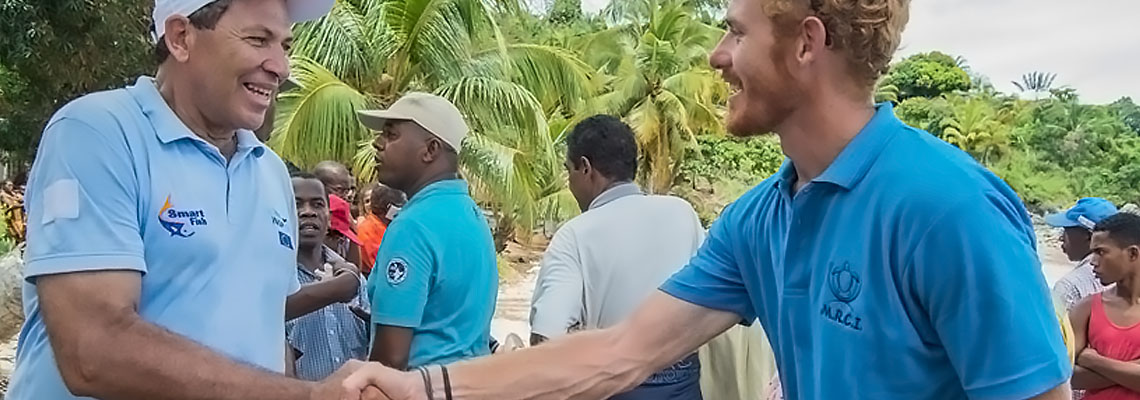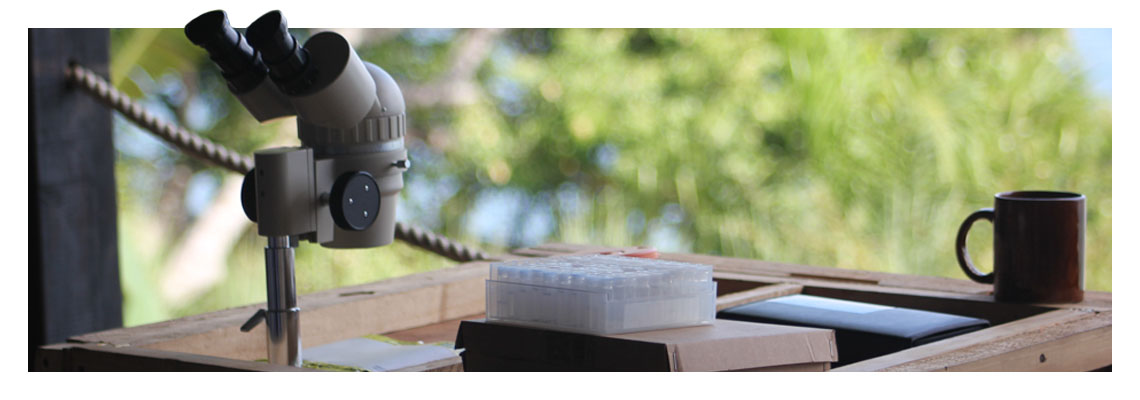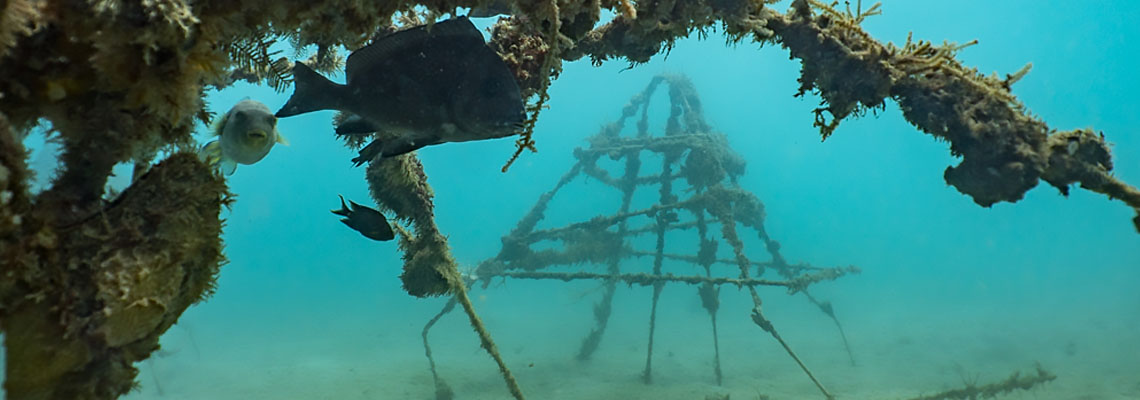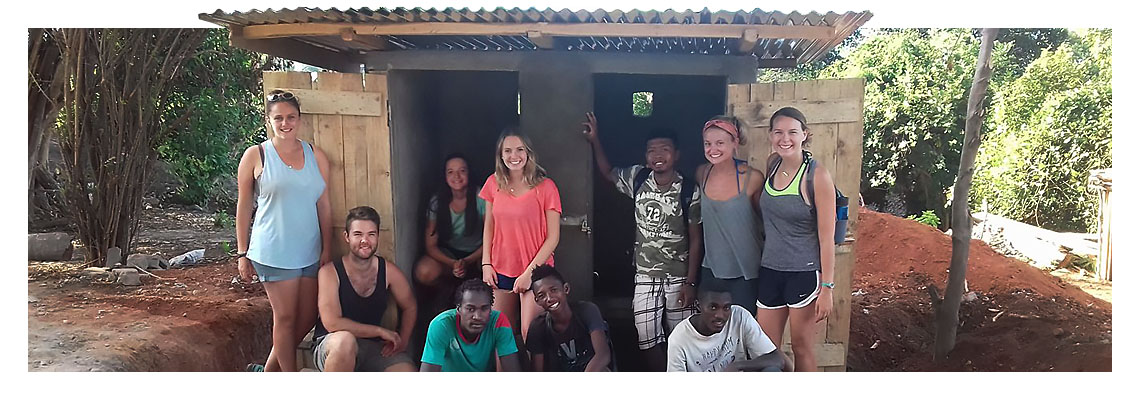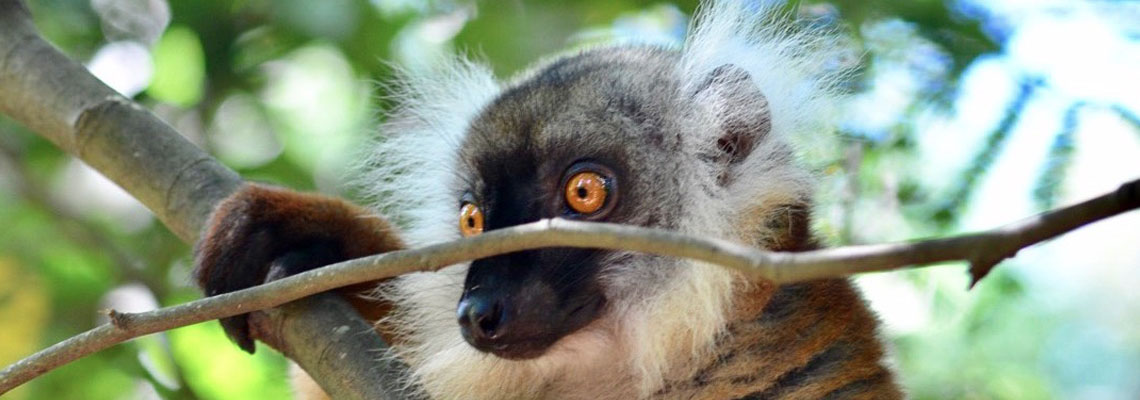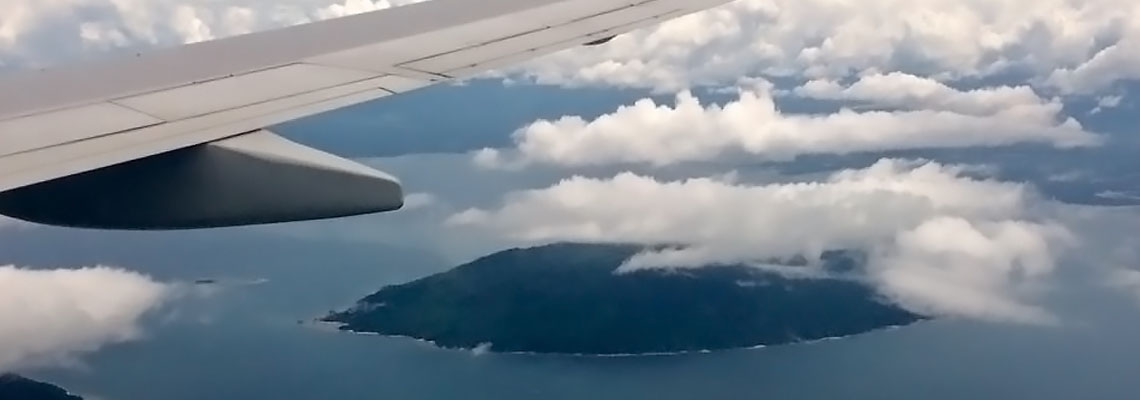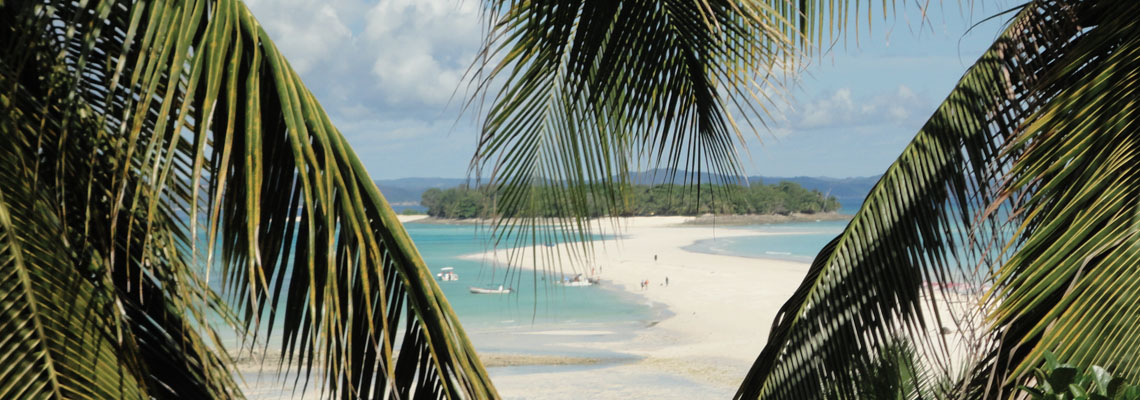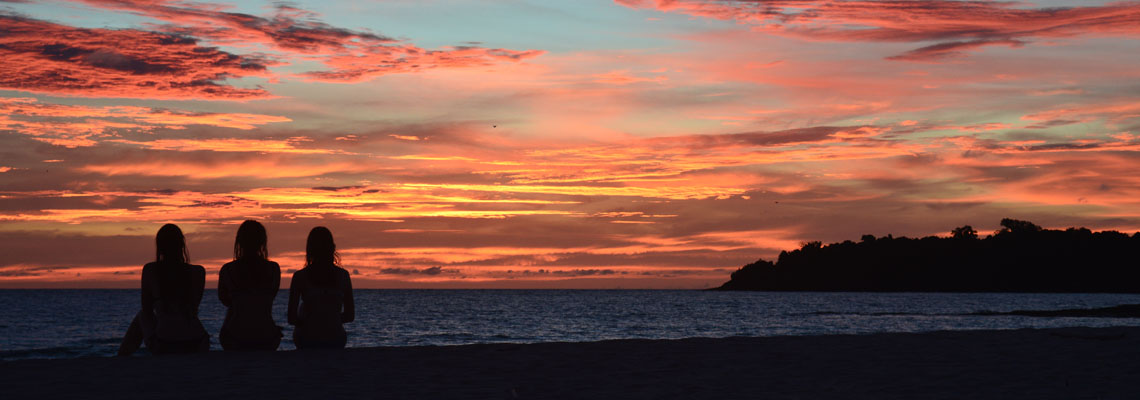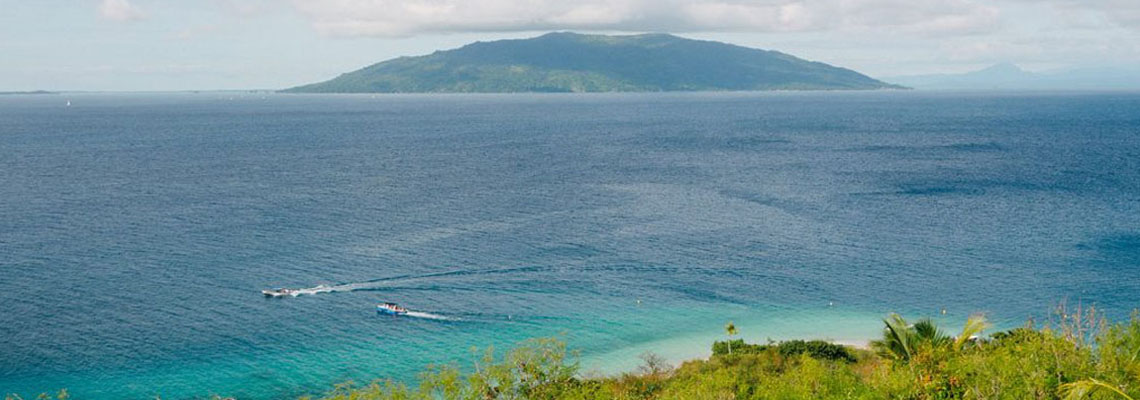Madagascar
At 592,800 sq. km Madagascar is the world’s 4th largest Island. Geographic isolation over the last 88 million years has allowed the fauna and fauna to evolve in isolation. This attributes to the unique and varied species which are found across the country.
It is estimated that 80% of species in Madagascar are endemic with new and novel species being discovered all the time. Madagascar is described as a biodiversity hotspot with 5% of all known species being found in only 0.4% of the worlds land mass.
However, since human colonisation around 2,000 years ago, Madagascar, the world’s greatest biodiversity hotspot, has lost around 90% of its natural forest habitat.
This is currently still on the rise due to demand for firewood and timber, land being used for agriculture and mining for minerals such as sapphires and nickel causing a vast loss of native forest and fragmentation of habitats.
Most famous for its lemurs, of which all the many species can be found nowhere else in the world. Nearly 60 taxa are found in the country and these unique mammals vary greatly in size, behaviour and habitat choice, from mouse-sized nocturnal species to large diurnal lemurs who live in the inhospitable spiny forests.
Habitat loss, capture for the pet trade and hunting are the main things which threaten lemurs. Species with small and unique habitats are more vulnerable than others.
Madagascar also houses over 300 species of frog, 99% which are endemic to Madagascar and many reptiles including snakes, tortoise, iguanas and the chameleon, another iconic animal of Madagascar.
The chameleon is found all over the country and Madagascar houses two thirds of all species in the world. They vary greatly, ranging from the bright and colourful tree living species Furcifer pardalis to the tiny ground dwelling Brookesia micra.
Marine habitats are also host to a high diversity of species. Numerous coral reefs, beaches and mangroves surround the island which allows the thousands of species of fish, four turtle species and many invertebrate species to thrive.
This as well as being on migratory routes for humpback whales and lots of other pelagic fish, dolphins and sharks occupying the deeper waters make the marine world in this ocean, colourful, full of life and variety.
This precious ecosystem is being threatened by pollution from towns and terrestrial runoff from deforestation. Fishing for sharks and overfishing of vital fish stocks which locals rely on for food and livelihoods.
Climate change has had a notable effect on the environment. With increasing frequency and severity of cyclones, an increase in temperature and a decrease in rainfall in just 50 years Madagascar is considered one of the most vulnerable countries to the impact of climate change.
Monitoring change and finding ways to prevent long term damage to habitats and ecosystems is therefore vital to protecting and preserving this extraordinary environment and its biodiversity.
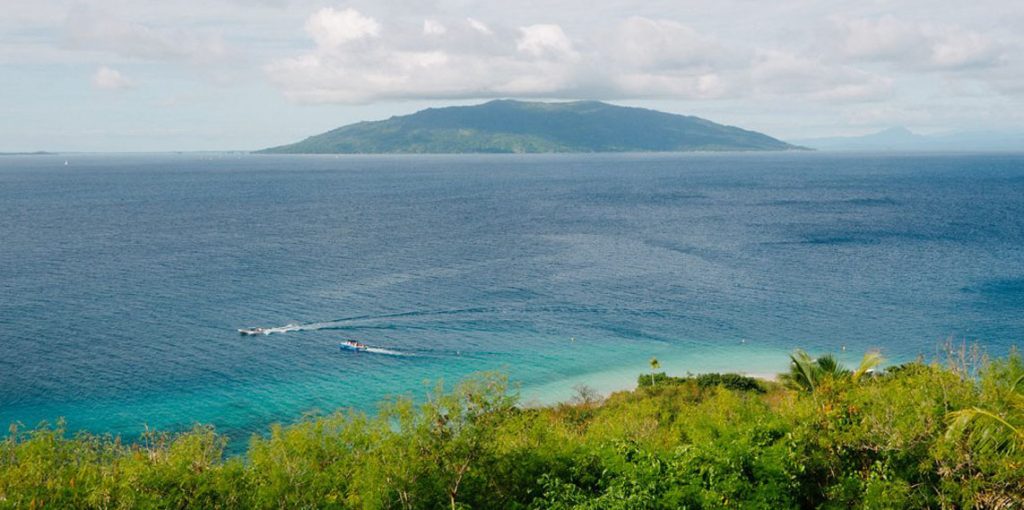
Nosy Be
Since Madagascar split from Africa 160 million years ago, it has developed an array of distinct ecosystems and unique wildlife, such as those on Nosy Be. Approximately 92% of its mammals, 95% of its reptiles, 89% of its flora and 60% of its birds are found nowhere else on Earth.
Madagascar is also home to many incredibly coral rich and species diverse marine areas, most notably around the island of Nosy Be, where one can find a variety of hard and soft corals, sponges, invertebrates, large schooling pelagic fish, a vast array of brightly coloured reef fish, including wrasse, parrot fish, trigger fish, damsels, butterfly fish… the list goes on and on. These reef fish in turn attract other rarer and larger creatures to these majestic waters.
Two of the five turtle species found around Madagascar are the Hawksbill and Green turtles. Both species are frequently found around the island of Nosy Komba where our research centre is located, not only do the visit the reef but the nest on the pristine beaches. Turtles are of great importance to the marine environment as they control the populations of smaller organisms and are indicators of wider ecosystem health. Hawksbill turtles are listed as critically endangered on the IUCN red list and green turtles are listed as endangered. Their conservation in the waters surrounding Nosy Be and Nosy Komba is crucial to their long term species survival.
Madagascar is the only place in the world were one will find lemurs, evolving in isolation from other primate species. They are synonymous with Madagascar’s endemic collection of fauna. There are over 100 species of lemur; almost all are classed as rare, vulnerable or endangered. Mostly they face dangers from human influence, primarily habitat destruction. Sadly it’s thought that at least 17 species have already become extinct since man first arrived on the shores of Madagascar, these include a giant lemur that stood the size of a human man.
Nosy Komba and Lokobe forest reserve is home to three species of lemur, the black, Hawk’s sportive, and mouse lemur. From the forests around the Turtle Cove base and visits to the forest reserve, it’s easy to observe their social and behavioural characteristics in the wild, whilst enjoying the notion of being up close to such an iconic and rare animal in its natural habitat.
Other creatures surrounding us on Nosy Komba include many of the 300 recorded bird species known to Madagascar, such as the crested drongo, Madagascar kingfisher, paradise flycatcher and tropic bird, which are all easily sighted. The brightly coloured and ornate panther chameleon is one of many in the large collection of reptiles on the island, another jewel in Madagascar’s crown. Madagascar is home to two-thirds of the world’s chameleons and is purported to be the origin of all chameleons.
Nosy Be also enjoys seasonal visits from a large number of whale sharks, the largest fish in the world reaching up to 14 metres in size, as well as migratory visits from many cetaceans (34 species found in Madagascan waters) such as the humpback whale and the recently discovered omura whale. The local dolphin population can be sighted in the waters all year round.
Nosy Be is a haven for marine life and recreational SCUBA divers alike. The marine environment is of overwhelming importance to the local communities, providing the majority of food supplies and employment. However, with a developing area such as Nosy Be, the demand and strain on the surrounding marine environment is ever increasing, with detrimental effect.
Areas such as the Tanikely marine reserve have been created to protect the sea life, and evidence shows that it works. With implemented sustainable fishing practices and a strengthened ecosystem through protective laws, there can be a healthy balance between marine life and community needs.
The wealth of Madagascar’s wildlife is clearly visible, on land and in the water, In order to preserve it for future generations and help sustain a healthy ecosystem for all its creatures to thrive, conservation initiatives are now more valuable than ever. Constant real time monitoring of population changes, habitat health and potential localised threats, are incredibly valuable, which we aim to source and help contribute to the protection of this amazing part of the world.
Become a part of the MRCI team and experience the many wonders that Nosy Be has to offer whilst actively contributing and giving something back to this majestic bio-diverse environment.
Nosy Komba
Nosy Komba (Island of lemurs) is a small volcanic island lying midway between Nosy Be and the mainland of Madagascar. The volcanic hills fold dramatically down into the water creating sandy coves.
The island’s main settlement is the village of Ampangorinana, where one can stroll the winding village lanes lined with beautiful embroidered table cloths, woven baskets and wood carvings. This quiet village relies on selling its unique crafts to tourists for its income.
The Turtle Cove research centre is located on Nosy Komba and is adjacent to a pristine white beach allowing easy access to the wider surrounding waters and directly the world famous Lokobe forest reserve and the National Oceanographic Research Centre.
Mamoko Island
This remote beautiful island is blessed with a small pristine forest that spills out onto sandy white beaches. This island is very traditional and still has a monarchy in place, with a Queen as head of the islands small village population. The village sustains itself by fishing and by charging a fee to visitors that tour the village. This village has a troop of lemurs that live amongst the villagers as well as a 100 year old tortoise.
Russian Bay
Russian Bay is a fascinating area full of mystery and intrigue. The bays name dates back to 1905 during the Russo-Japanese war when a Russian warship anchored there. Their orders were to attack any passing Japanese ships, but the crew took to life in Madagascar and realised that they did not wish to wage war nor to return to Russia. Their ship was hidden in the upper reaches of Russian Bay and twice emerged to trade with pirate vessels that used to frequent the Mozambique Channel. The ship eventually ran out of fuel for its boilers and sunk in the bay years later. The last Russian sailor died in 1936. The soldiers graves and the ships remains can still be seen today.
The marine life in the bay itself is spectacular offering wonderful snorkelling and diving, especially on the reefs outside the entrance. In October to December whales and whale sharks are commonly sighted in the bay. The moist tropical deciduous woods harbour abundant birdlife, reptiles and lemurs, and there is a choice of trails for day hikes.
Nosy Iranja
The Nosy Iranja Archipelago is located 40 km south of Nosy Be Island and is comprised of two islets, Nosy Iranja Be and Nosy Iranja Kely that are linked together by a most picturesque sandbar at low tide.
Nosy Iranja Be is the biggest island with an area of approximately 30 Ha. Nosy Iranje Be is home to a delightful abandoned lighthouse designed by the famous Gustav Eiffel, who also designed the Eiffel Tower in Paris. The island has a small village inhabited by local fishermen.
Nosy Iranja Kely, is approximately 17 Ha and is characterised by large white sandy beaches that are important breeding sites for the Hawksbill and Green sea turtles. The lush vegetation is home to a diversity of bird life and giant Coconut crabs
In early 2000, a 4 star hotel was built on Nosy Iranja Kely, with 24 lodges spread over the small island. The hotel has initiated ecotourism activities through the observation of nesting marine turtles, mainly in the south and along the east coast of the island. The human activities related to the presence of the hotel brought disturbance to the marine turtles activities in the east side of the island as the hotels night lights reduced the nesting marine turtles. However, in the south of the island, activities are carried out to preserve the integrity of the site and protect it against poachers.
Bararahamay River
The Baramahamay River is characterised by verdant hills behind sunny, white beaches. The villages are known for their blacksmiths and boat builders. One small village is known for its wild honey, which can be purchased from young entrepreneurs who sell the bottles of honey as well as crabs from their little pirogues. There is also a good chance of seeing the very rare Madagascar fish eagle here.
The village has a small primary school, with more than 50 children in attendance
Lokobe Nature Reserve
Lokobe Nature Reserve is located in the south-eastern part of the island of Nosy Be. It is Nosy Be’s only protected area covering approximately 7, 4 km² and is one of the rare localities where the primary Sambirano forest still exists. Protection of this ancient forest stems back as far as 1927. This humid medium altitude evergreen forest is the natural habitat of the endangered black lemur, the gray-backed sportive lemur and mouse lemur.
Lokobe is also home to the Madagascar pygmy kingfisher, panther-chameleons, endemic frogs and snakes.
